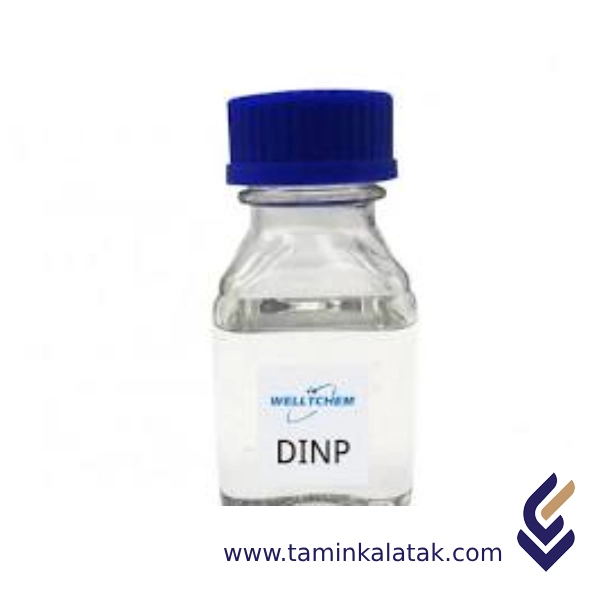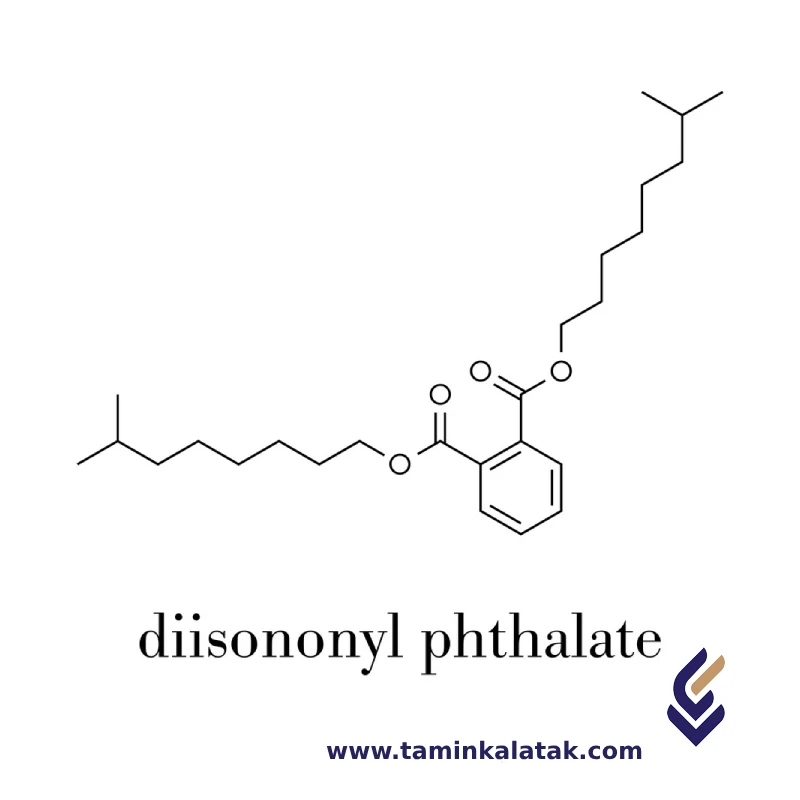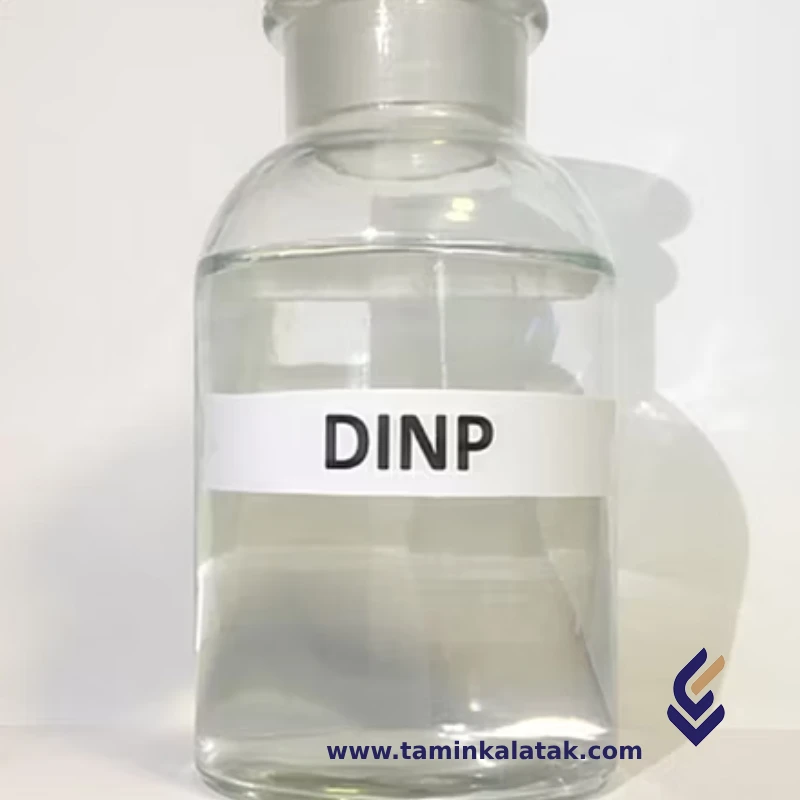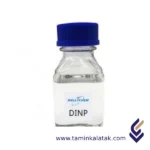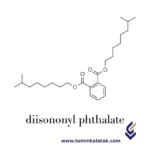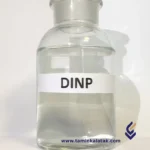Polymers are made up of very large molecules made up of many repeating units called monomers, which ultimately form this long polymer chain
Plasticizers are chemical additives added to polymers to increase their flexibility, ductility, and processability.
Di Iso Nonyl Phthalate (DINP)
Di-Iso-Nonyl Phthalate (DINP) is a phthalate plasticizer commonly used to enhance the flexibility, durability, and workability of plastics, particularly polyvinyl chloride (PVC). It belongs to a family of high molecular weight phthalates and is widely used in various industrial and consumer applications.
Structure
Di-Iso-Nonyl Phthalate (DINP) is an organic compound belonging to the phthalate ester family. Its chemical structure consists of a phthalic acid core, where two ester functional groups are attached to iso-nonyl alcohol chains. The phthalic acid backbone is composed of a benzene ring with two carboxylate (-COO) groups positioned at the ortho positions. These carboxylate groups are esterified with branched iso-nonyl groups, which typically contain nine carbon atoms in a varied structural arrangement. The branching in the iso-nonyl chains contributes to DINP’s higher molecular weight and lower volatility compared to lower molecular weight phthalates. This structural feature enhances its stability and flexibility when used as a plasticizer in polymers such as PVC. Due to its chemical nature, dinp is hydrophobic, poorly soluble in water, but readily dissolves in organic solvents and plastic materials, allowing it to impart flexibility and durability to a wide range of products.
Properties
Di-Iso-Nonyl Phthalate (DINP) is a clear, colorless to slightly yellow, oily liquid with a high molecular weight and low volatility. It has a molecular formula of C₂₆H₄₂O₄ and a molecular weight of approximately 418.6 g/mol. DINP is insoluble in water but highly soluble in organic solvents such as ethanol, benzene, and other non-polar compounds. It has a boiling point of around 244°C at low pressure and a density of approximately 0.97 g/cm³ at 20°C. DINP is chemically stable, resistant to heat and oxidation, and does not easily evaporate, making it a preferred plasticizer for long-lasting applications. Due to its branched iso-nonyl groups, it provides enhanced flexibility, low migration, and good compatibility with polymers like polyvinyl chloride (PVC). Its low volatility and high permanence make it suitable for applications requiring durability and resistance to leaching.
Applications of Di-Iso-Nonyl Phthalate (DINP)
- Plastics Industry: Used as a plasticizer in polyvinyl chloride (PVC) products such as flooring, cables, and roofing materials.
- Consumer Products: Found in flexible vinyl toys, synthetic leather, footwear, and sporting goods.
- Automotive Industry: Used in car interiors, underbody coatings, sealants, and hoses to improve flexibility and durability.
- Construction Materials: Applied in gaskets, insulation materials, and adhesives.
- Electrical Applications: Enhances flexibility in electrical cables and wire insulation.
- Coatings and Sealants: Used in paints, varnishes, and coatings to improve plasticity and longevity.
Advantages of Di-Iso-Nonyl Phthalate (DINP)
- High flexibility and durability when used in plastics.
- Low volatility and migration, making it ideal for long-term applications.
- Good resistance to heat and oxidation, ensuring stability in high-temperature environments.
- Better environmental performance compared to lower molecular weight phthalates, as it has lower bioavailability and leaching potential.
- Cost-effective and widely available, making it a preferred plasticizer for many industrial applications.
Disadvantages of Di-Iso-Nonyl Phthalate (DINP)
- Potential health concerns as it has been associated with endocrine-disrupting effects and possible reproductive toxicity at high exposure levels.
- Environmental persistence due to its chemical stability, which can lead to accumulation in ecosystems.
- Regulatory restrictions in regions such as the EU and the US, limiting its use in children’s toys and childcare products.
- Limited biodegradability, contributing to plastic pollution concerns.
- Possible material compatibility issues with certain polymers or applications requiring ultra-low migration plasticizers.
Applications
| Applications | , , , , , |
|---|
Di Iso Nonyl Phthalate (DINP)
| Products | Viscosity(mPa.s) | Density (g/Cm³) | Applications | Data Sheet | MSDS |
|---|---|---|---|---|---|
| Diisononyl Phthalate | 80-90 | 0.97-0.99 | Plasticizer Automotive Industry Construction Materials Electrical & Electronics Toys & Childcare Products Adhesives & Sealants |

